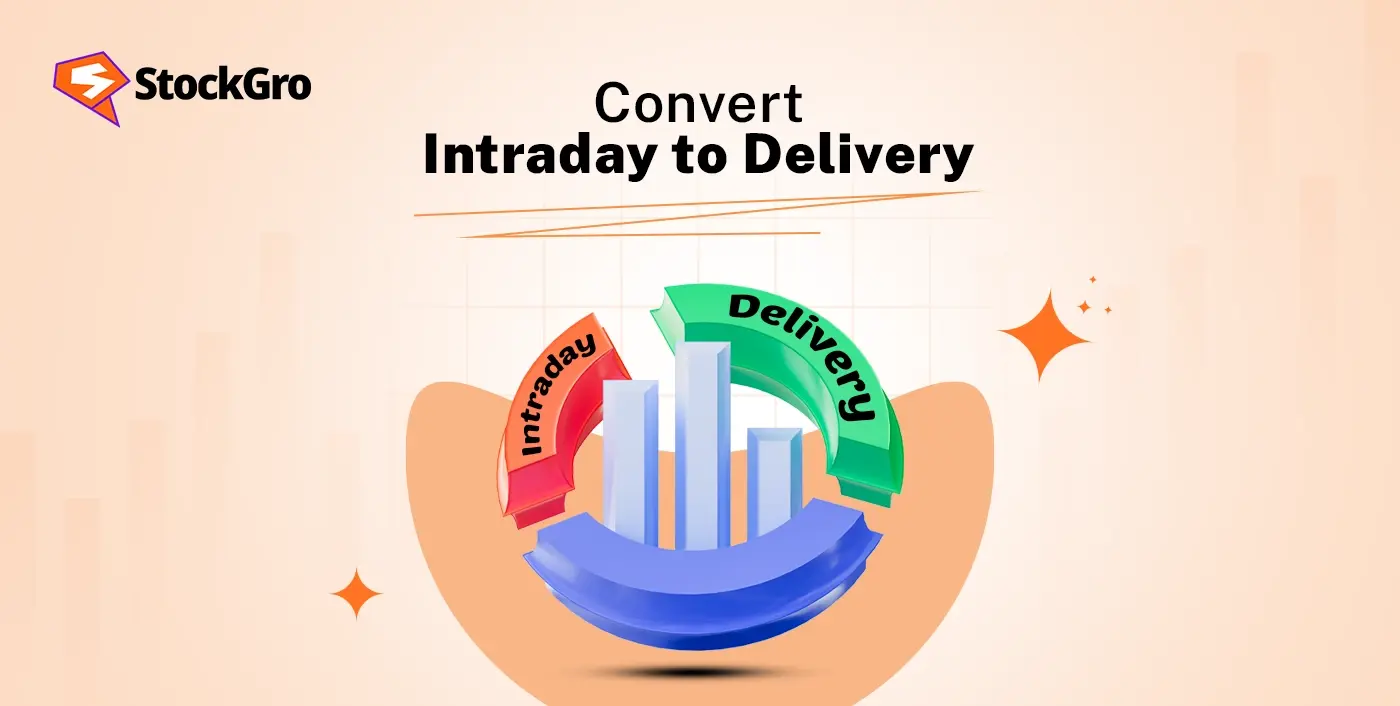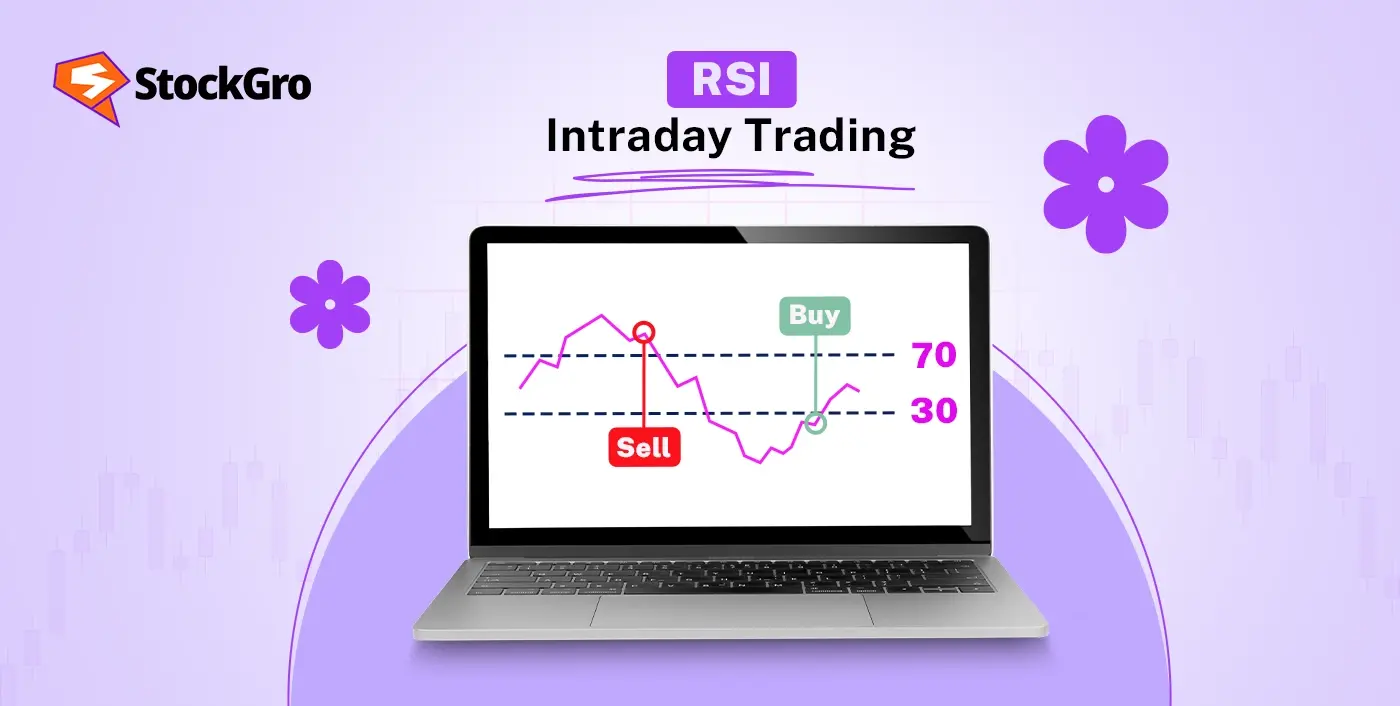
Many traders enter the stock market hoping to earn quick profits through intraday trading. But when the market turns unpredictable, these trades can quickly lead to losses. In fact, according to SEBI’s report for FY 2022–23, over 70% of individual traders engaged in intraday equity trading ended up incurring losses.
One way to manage this risk is by converting intraday to delivery. This allows traders to hold their position instead of selling at a loss, giving the stock more time to recover. In this blog, we’ll explain the complete process of how to convert intraday to delivery, and when it can be the right move.
Understanding Intraday and Delivery Trading
Intraday and delivery are two distinct types of stock trading options. Intraday trading refers to the completion of both buying and selling of stocks within the same trading session, while delivery trading refers to holding the shares beyond the trading day. When placing an intraday order, a trader initially intends to square off their position before the market closes. However, if they wish to hold the shares, perhaps due to a favorable price movement or a change in market outlook, they need to convert the trade.
The exact process can vary slightly between brokers but generally involves modifying the order type before the end of the trading session.
How to Convert Intraday to Delivery in Trading?
These are the basic steps to follow to convert an intraday to delivery position:
- Log in to your stockbroker platform
Log in to your stockbroker’s trading application or web portal.
- Locate your position
Locate the section that displays your current open trades, often labeled “Positions,” or “Portfolio”.
- Identify the stock position
Identify the specific stock position you wish to convert from intraday trade to delivery.
- Look for an convert option
Look for an option to “Convert,” “Modify Product Type,” “CTD” (Convert to Delivery).
- Enter the convertible share count
Enter the number of shares to convert.
- Verify adequate funds
Before proceeding, verify that your trading account has adequate funds to cover the full market value of the shares, since leverage used in intraday trades will no longer apply to delivery.
- Complete the conversion
Completed this conversion before the broker’s specified cut-off time for intraday trades on that trading day, which is typically a few minutes before the market closes.
Upon successful completion, the shares will be moved from open trading positions into Demat account, indicating they are now held for more than one day.
Why Convert Intraday to Delivery?
Converting an intraday position to delivery allows traders to carry a stock beyond the same-day trading window when the situation calls for it. Several factors can make traders to move from intraday to delivery, including:
- Avoid forced square-off: Intraday positions are auto-closed by brokers near market close. Converting to delivery lets you avoid forced exit at potentially unfavorable prices.
- Extended holding opportunity: Delivery trading supports holding shares for a longer duration, making room for possible recovery or future growth.
- Response to new information: Unexpected developments during the trading session may prompt a shift in approach, and delivery provides the flexibility to adjust.
- Reduced time pressure: Holding beyond the day eases the urgency to act on short-term market movements.
- Ownership benefits: While intraday trading often uses leverage (requiring less capital upfront), converting to delivery requires paying the full value of the shares, granting actual ownership and potentially dividends or bonuses.
- Lower margin requirements: Once converted, full payment is required, but there’s no need to maintain high intraday margins, reducing sudden margin calls.
Things to Consider Before Converting Intraday Position to Delivery
Switching an intraday position to delivery changes how the trade is treated, both financially and strategically. These are some key factors to keep in mind:
Stocks held for delivery are generally less liquid compared to intraday trades. Your ability to sell them immediately at a desired price might be limited, as you are committing to a longer holding period for these shares.
- Risk exposure
Holding shares overnight exposes you to significant overnight market volatility and potential price gaps when the market reopens. Individuals should assess their comfort level with this elevated risk compared to the typically shorter exposure of an intraday trade.
- Margin requirements
Delivery trades generally require more margin than intraday positions. For example, if 100 shares of Infosys were bought intraday with ₹40,000, converting the trade to delivery might increase the margin requirement to ₹60,000. It’s important to ensure the account has enough funds to meet this difference.
- Tax treatment
Intraday and delivery trades are subject to separate tax treatments under the income tax framework. Intraday gains are classified as speculative income and taxed as per the individual’s income slab. Whereas, the profits from delivery trades are classified as capital gains, short-term gains (for holdings up to a year) attract 20% tax, while long-term gains (held for over a year) are taxed at 12.5% on amounts exceeding ₹1.5 lakh annually.
Conditions and Charges to Note Before Conversion
Before converting an intraday trade to delivery, it’s essential to understand the requirements set by SEBI and your stockbroker such as follows:
| Particulars | Details |
| Conversion charges | None, brokers generally do not levy any additional fee for converting an intraday position to delivery. |
| SEBI margin requirement | 100% of the value of the trade must be available in the account to successfully carry out the conversion. |
| Full payment required | Yes. Leverage is withdrawn, full funding of the trade is mandatory. |
| Broker cut-off time | Usually between 3:15 PM – 3:20 PM IST; varies slightly by broker. |
| Risk of inaction | Auto square-off may occur before market close if conversion isn’t done. |
Conclusion
Knowing how to convert intraday to delivery can be useful when there are sudden market movements or a change in trading intent. While the conversion process is straightforward, it alters how the trade is handled in terms of risk, cost, and tax treatment, so it’s important to be aware of when and how this option applies.
FAQs
You can convert intraday trades in most stocks to delivery if you act before the broker’s cut-off time, usually before the market closes. However, this option is only available if you have sufficient funds in your trading account to cover the full delivery cost. Not every intraday product or security may be eligible for conversion, depending on your broker’s rules and the nature of the instruments involved.
There is no penalty if you do not convert your intraday trade to delivery. Unconverted trades are automatically squared off by your broker before the market closes. This action is part of standard brokerage practice to manage risk. While there’s no specific penalty, you may incur losses or charges depending on the market movement and timing of the square-off. Therefore, it’s advisable to monitor your trades carefully throughout the trading session.
Options and futures intraday trades cannot be converted into delivery positions. These instruments are inherently time-bound contracts and must be either squared off on the same day for intraday trades or held until expiry if taken as positional. Some brokers might offer carry-forward options separately, but intraday F&O trades are always closed on the same day and treated differently from equity delivery trades. Always review your broker’s specific product terms.
If you forget to convert your intraday trade to delivery, the position is automatically squared off by your broker towards market close, usually around 3:15 PM. The trade settles at the available market price at that time, realizing either a profit or loss. No additional penalty is charged, but you have no control over the exit timing or price. Monitoring your intraday positions actively is essential to avoid unwanted outcomes.

